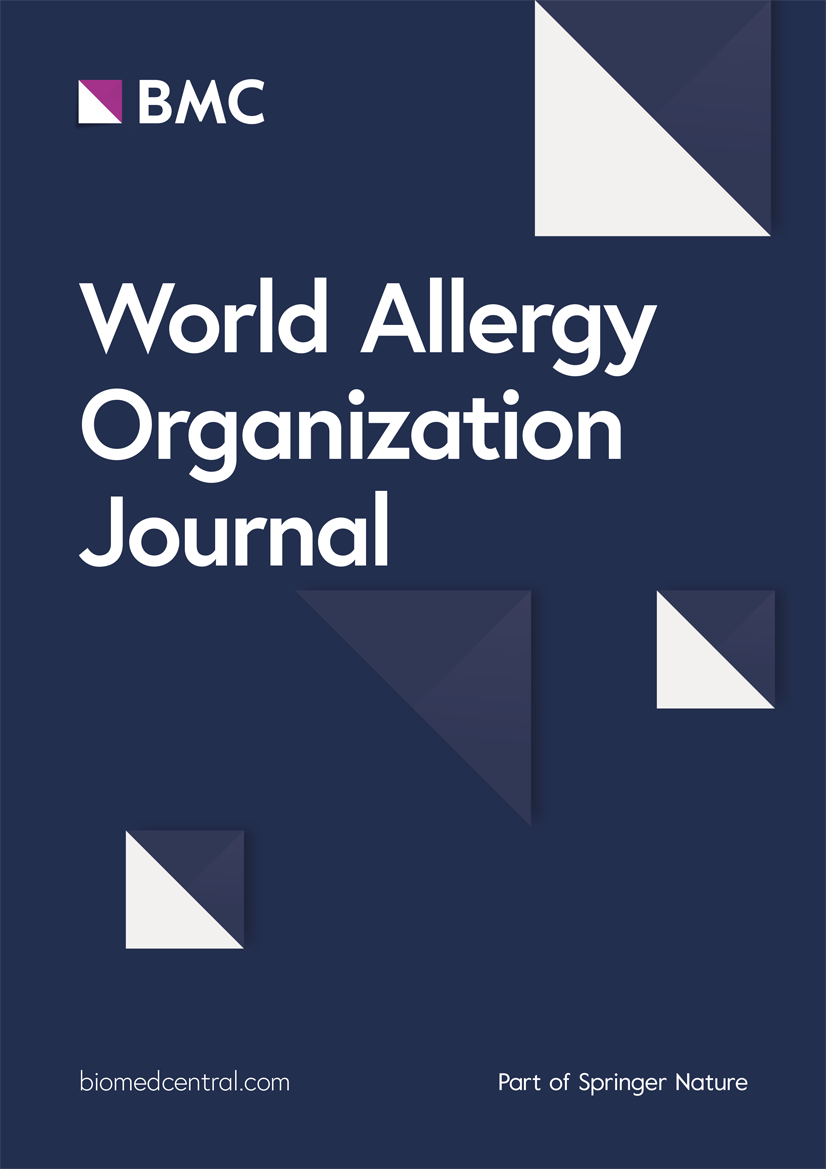In perennial allergic rhinitis, RQLQ is improved similarly by Azelastine 0.15 and mometasone furoate
IF 3.9
2区 医学
Q2 ALLERGY
引用次数: 0
Abstract
Some double-blind, placebo-controlled trials have shown that Azelastine (Aze) high dose (0.15%) was effective in seasonal (SAR) and perennial allergic rhinitis (PAR). However, there was no long-term comparison between Aze 0.15% and intranasal corticosteroids (INCS) on safety and quality of life in perennial allergic rhinitis.
An open-label, active-controlled, parallel-group one-year study comparing mometasone furoate and Aze 0.15% in adults assessed safety over 1 year. Efficacy using the 28-item rhino-conjunctivitis quality of life questionnaire (RQLQ) was a secondary end point.
A total of 703 patients were randomized and 687 (97.7%) were included in the intent-to-treat (ITT) population. The present formulation was shown to be safe with long-term use over 12 months, with a mean duration of exposure of 270.7 days.
Over the one-year period, there was no significant difference for any RQLQ domains between Aze and mometasone furoate (MF) for all evaluations (baseline, 6, 9, and 12 months). This study suggests that Aze 0.15% and MF display a similar improvement of RQLQ ( 2.80 [2.78] for Aze 0.15% vs 2.81 [2.75] for MF).
Clinical trial registry number
NCT00720382.
在常年性变应性鼻炎中,Azelastine 0.15和糠酸莫米松同样能改善RQLQ。
一些双盲安慰剂对照试验表明,Azelastine (Aze)高剂量(0.15%)对季节性(SAR)和常年性变应性鼻炎(PAR)有效。然而,在常年性变应性鼻炎患者的安全性和生活质量方面,Aze(0.15%)和鼻内皮质类固醇(INCS)没有长期比较。一项为期一年的开放标签、积极对照、平行组研究比较了糠酸莫米松和0.15% Aze在成人中的安全性。使用28项鼻-结膜炎生活质量问卷(RQLQ)的疗效作为次要终点。共有703例患者被随机分组,其中687例(97.7%)被纳入意向治疗(ITT)人群。目前的配方被证明是安全的,长期使用超过12个月,平均暴露时间为270.7天。在一年的时间里,Aze和糠酸莫米松(MF)在所有评估(基线、6、9和12个月)中没有任何RQLQ域的显著差异。本研究表明,0.15% Aze和MF对RQLQ的改善相似(0.15% Aze对2.80 [2.78],MF对2.81[2.75])。临床试验注册号:NCT00720382。
本文章由计算机程序翻译,如有差异,请以英文原文为准。
求助全文
约1分钟内获得全文
求助全文
来源期刊

World Allergy Organization Journal
Immunology and Microbiology-Immunology
CiteScore
9.10
自引率
5.90%
发文量
91
审稿时长
9 weeks
期刊介绍:
The official pubication of the World Allergy Organization, the World Allergy Organization Journal (WAOjournal) publishes original mechanistic, translational, and clinical research on the topics of allergy, asthma, anaphylaxis, and clincial immunology, as well as reviews, guidelines, and position papers that contribute to the improvement of patient care. WAOjournal publishes research on the growth of allergy prevalence within the scope of single countries, country comparisons, and practical global issues and regulations, or threats to the allergy specialty. The Journal invites the submissions of all authors interested in publishing on current global problems in allergy, asthma, anaphylaxis, and immunology. Of particular interest are the immunological consequences of climate change and the subsequent systematic transformations in food habits and their consequences for the allergy/immunology discipline.
 求助内容:
求助内容: 应助结果提醒方式:
应助结果提醒方式:


